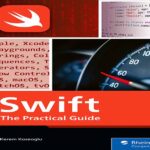- عنوان کتاب: Fighting the Virus Disease Modeling and Cyber Security
- نویسنده: Marc Mangel
- حوزه: امنیت سایبری
- سال انتشار: 2025
- تعداد صفحه: 293
- زبان اصلی: انگلیسی
- نوع فایل: pdf
- حجم فایل: 4.99 مگابایت
تنوع سایبری ما را احاطه کرده است – از مشکلات مربوط به لوازم الکترونیکی شخصی ما گرفته تا جرایم سایبری که در آن سیستمهای سایبری به گروگان گرفته میشوند، تا تهدیدات علیه زیرساختهای حیاتی مانند نیروگاههای برق یا آب که توسط دشمنان “از کار انداخته میشوند”. ما نمیتوانیم هم از این مسائل فرار کنیم و هم در دنیای مدرن زندگی کنیم. این کتاب سهمی در نظریه تنوع سایبری دارد که هدف آن آموزش دانشجویان و تحلیلگران (Dell Technologies، 2023) و ارائه نقطه شروعی برای محققان است. بلوغ توانایی تحلیلی برای مطالعه تنوع سایبری مستلزم یک چارچوب مفهومی و مدلسازی، راهی برای دسترسی تحلیلگران به این چارچوب و آزمایش ایدههای توسعهیافته در چارچوب است. ما (شما، خواننده و من) همه این موارد را بررسی خواهیم کرد. همچنین امیدوارم افرادی که مدلساز نیستند، این کتاب را بخوانند و به این نتیجه برسند که تنوع سایبری و پیامدهای آن را میتوان مدلسازی کرد و ایجاد گروههایی که چنین مدلسازی را انجام میدهند، مهم است. هنگام فکر کردن به تنوع سایبری، نقش آشکار و مهمی برای مهندسی سیستمها با تمرکز بر ویژگیهای سیستمهای خاص وجود دارد، اما نقشی نیز برای تجزیه و تحلیل عملیات سایبری در سطحی بالاتر از جزئیات سیستمهای عملیاتی خاص وجود دارد. اغلب، فقدان یک چارچوب تحلیلی مشترک منجر به تصمیمگیری ضعیف میشود (بوریس و همکاران، ۲۰۱۰). تحقیق در عملیات/تحلیل عملیاتی (اصطلاحات ایالات متحده/بریتانیا) یک رویکرد علمی به مشکلات عملیاتی است و ما را در نگاشت از یک چارچوب مفهومی سطح بالا به ویژگیها، معیارها و پیشبینیهای سطح دوم راهنمایی میکند. فضای سایبری یک حوزه عجیب و غریب است (کینگ و گالاگر، ۲۰۲۰)؛ در واقع، تعریف آن حتی دشوار است – ما در زیر به آن میپردازیم – و من آن را در اینجا پررنگ میکنم زیرا تعریفی هم در متن اصلی (زیر) و هم در واژهنامه گنجانده شده است. اگر کاملاً در تفکر تحلیلی در مورد مشکلات سایبری تازهکار هستید، پیشنهاد میکنم نگاهی به Danzig (۲۰۱۴)، Singer و Friedman (۲۰۱۴) و Libicki (۲۰۱۶) بیندازید. Danzig (۲۰۱۴) و King و Gallagher (۲۰۲۰) از طریق دانلود در دسترس هستند و به طور گسترده، به روشهای کمی متفاوت، چشمانداز امنیت سایبری را از دیدگاه ایالات متحده پوشش میدهند. لیبیکی (۲۰۱۶) مقدمهای فوقالعاده آموزنده در مورد تنوع سیستمهای سایبری است و کتابی است که هم باید از اول تا آخر آن را بخوانید و هم میتوانید آن را روی قفسه کتاب خود (کتاب فیزیکی یا الکترونیکی) داشته باشید تا هر از گاهی به آن مراجعه کنید. خواهید دید که ایدههای او در سراسر این کتاب ظاهر میشوند و میتوانیم با توصیهای که در صفحه ۱ آمده است شروع کنیم: «هنگام مواجهه با مشکلی مانند تهدید فضای مجازی، جدی بودن اما نه ناامید بودن مفید است».
Cyber variability surrounds us – from problems with our personal electronics, to cyber crime in which cyber systems are held hostage, to threats on the critical infrastructure such as power or water plants being “taken down” by adversaries. We cannot both get away from these issues and live in the modern world. This book is a contribution towards a theory of cyber variability, intended to inform the training of students and analysts (Dell Technologies, 2023) and provide a starting point for researchers. Maturing analytic capability for the study of cyber variability requires both a conceptual and modeling framework, a way for analysts to access this framework, and tests of the ideas developed in the framework. We (you, the reader, and I) will explore all of these. I also hope that people who are not modelers will read the book, conclude that cyber variability and its implications can be modeled, and that it is important to build groups that do such modeling. When thinking about cyber variability there is an obvious and important role for systems engineering with a focus on specifics of particular systems, but there is also a role for the analysis of cyber operations at a level higher than the details of the specific operational systems. Often, the lack of a common analytical framework results in poor decision-making (Burris et al. 2010). Operations research/operational analysis (US/UK terminology) is a scientific approach to operational problems and will guide us in mapping from a top level conceptual framework to second level characteristics, metrics, and predictions. Cyberspace is an odd domain (King and Gallagher 2020); indeed it is even difficult to define – we tackle that below – and I boldface it here because a definition is included both in the main text (below) and the glossary. If you are completely new to analytical thinking about cyber problems, I suggest that you take a look at Danzig (2014), Singer and Friedman (2014), and Libicki (2016). Danzig (2014) and King and Gallagher (2020) are available by download and broadly cover, in slightly different ways, the landscape of cyber security from an United States perspective. Libicki (2016) is a wonderfully informative introduction to cyber system variability, and is something to both read from cover to cover and have on your shelf (physical or electronic) to dip into from time to time. You will see that his ideas appear throughout this book, and we can start with advice given on page 1 that “when facing a problem such as the threat from cyberspace it pays to be serious but not desperate”.
این کتاب را میتوانید از لینک زیر بصورت رایگان دانلود کنید:
Download: Fighting the Virus Disease Modeling and Cyber Security




































نظرات کاربران